In our first part – Mobile Phones Of The Future – 2018-2020 – we looked at what mobile phones should be like in the very near term. In this part we’re going to get into a bit more futuristic and far flung possibilities with what specs and abilities a phone from 2025 might have.
It’s always a terrible idea to try and predict the future though. As such, I generally don’t try to predict specifics but instead underlying trends or things that have proven to have reliable track records in incremental improvements.
As an example I’m not going to try and guess the next Snapchat, but by looking at the past decade in mobile chip development it’s a reasonably safe bet that at around 2020 phone specs for the CPU, RAM, Battery, Camera and Screen should be in the range of:
- CPU’s Breaching 3.2 GHz+
- RAM Around 8+ GB
- 4K UHD 120 Hz Screen Resolutions
- 4000+ mAH Batteries
- 5K – Possibly Even 8K – Video Recording

From here we can continue extrapolating to see what we might be buying come 2025. There’s also many other minor and major technologies on the horizon that could drastically move everything forward not least of which being 5G which we’ll get to in a minute.
Table of Contents
CPU, RAM And Screen Resolution
By 2025 the above specs will have obviously improved but to what extent? We’ll cover the battery and video recording specifics in a later section but for now let’s focus on the CPU, RAM and Screen Resolution.
- CPU’s Breaching 3.5+ GHz CPU
- RAM Around 12+ GB
- 4K – likely 5K – Screen Resolutions – Bezel Free
While many other technologies such as data transfer speeds (Wi-Fi and 4/5G) continue to increase hugely there are fundamental physical limits that have pretty much put a damper on what CPU speeds can achieve at the moment. As such I’m not expecting the clock speed of phones to increase too much more even by 2025.
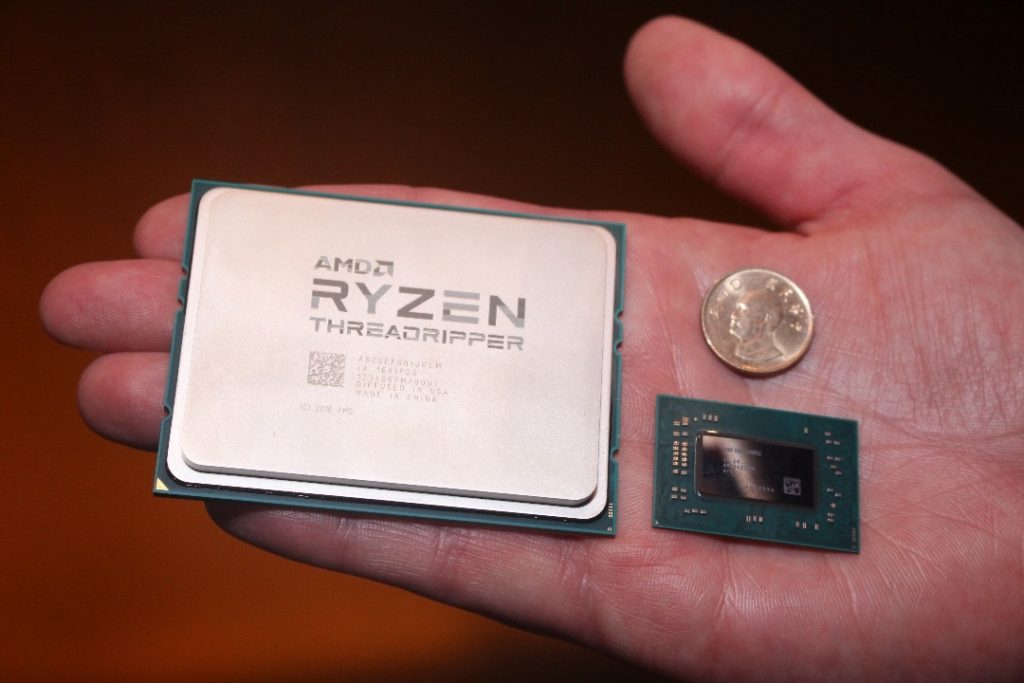
AMD’s Threadripper CPU with up to 16 cores. Source: notebookcheck.net
That being said we are starting to see a much bigger return to multi-core desktop CPU’s which will hopefully carry over to phones too. We already have 8 core CPU’s in phones so this could get increased up to a potentially large number – say 16+.
We’re also seeing lots of manufacturers focus on building AI specific hardware into the SoC. This will undoubtedly get bigger and bigger over the next few years and may even start to rival the main CPU for importance seeing as that part has essentially plateaued.
As for RAM I’d expect this to steadily increase as new programs and technologies require it. Although it’s possible technology wise for RAM to increase by a lot more, it makes little sense to release a phone with 32 GB of RAM in it when most people just use it for web surfing and messaging friends.
For desktops it makes sense as they can run far more powerful programs such as video editing but unless phones begin to require it for newer technologies – for example AI – then I don’t expect it to increase by a large amount.
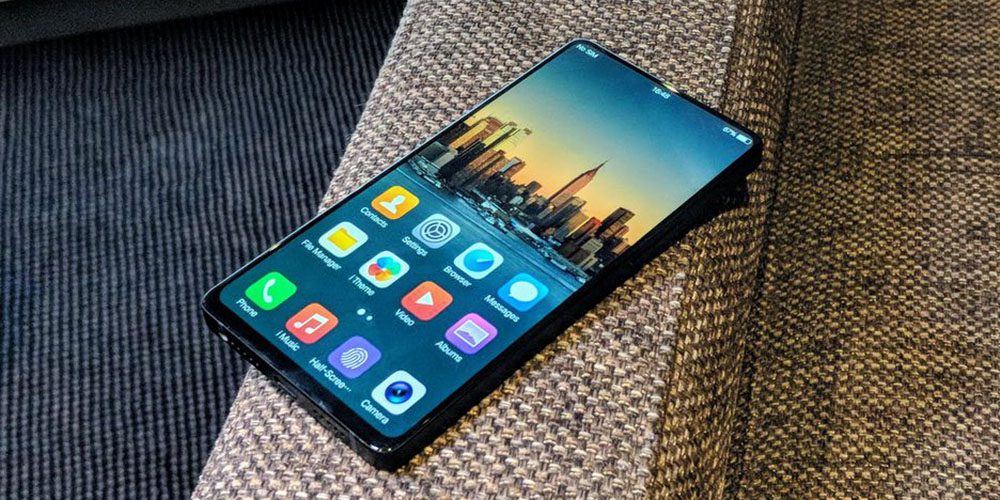
The Vivo Apex concept phone. Source: 9to5google.com
If there’s any trend for phone screens it’s how small the bezel is, not how high the screen resolution is. Above is the most striking example we’ve seen yet with the Vivo Apex concept phone and it’s near bezel free front.
Personally I’m all for this thinking. Make the bezel as small as physically possible, put the fingerprint sensor in the back middle like the Pixel has and call it a day.
By 2025 I’m sure this trend will have well and truly played out and most top tier phones will look essentially like the above Vivo Apex but much more refined. How they’ll handle the selfie camera(s), fingerprint or facial recognition systems and speakers is another thing entirely. I’m sure each manufacturer will have their own unique style be it a notch up the top or otherwise.
Along with these bezel free screens they’ll likely be mostly 4K in resolution. Even with the current 1440p phone screens it’s hard to really spot the difference in quality compared to a 4K screen due to how small the overall screen is. However screen technology always progresses upwards so I’m estimating that it will increase, just not a great deal. I’m sure some phones might even support 8K screens but most will remain at 4K as the “lower” resolution will consume less battery and be good enough.
5G Networking

While the term 5G is already being thrown about like it’s been fully rolled out these things take a considerable amount of time in reality. It was way back in 2010 that Sprint released the first WiMAX smartphone in the US, the HTC Evo 4G.
Now, a full 8 years later 4G is generally considered a pretty well rolled out technology at least in most first world countries. As of 2018 though we still don’t have any consumer grade 5G phones released just yet, however that should hopefully change in 2019. So if we use the 4G roll out as a baseline for what the 5G roll out will be, it’s quite likely that by 2025 5G should be a very well established technology.
This is important as 5G is looking more and more to be not just another “G” to add to the mix. While 4G was an important step in taking mobile data speeds from “oh yeah that page loaded OK” on 3G to “it’s been 2 seconds now why hasn’t my page loaded?” on 4G, 5G should take that to a whole new level.
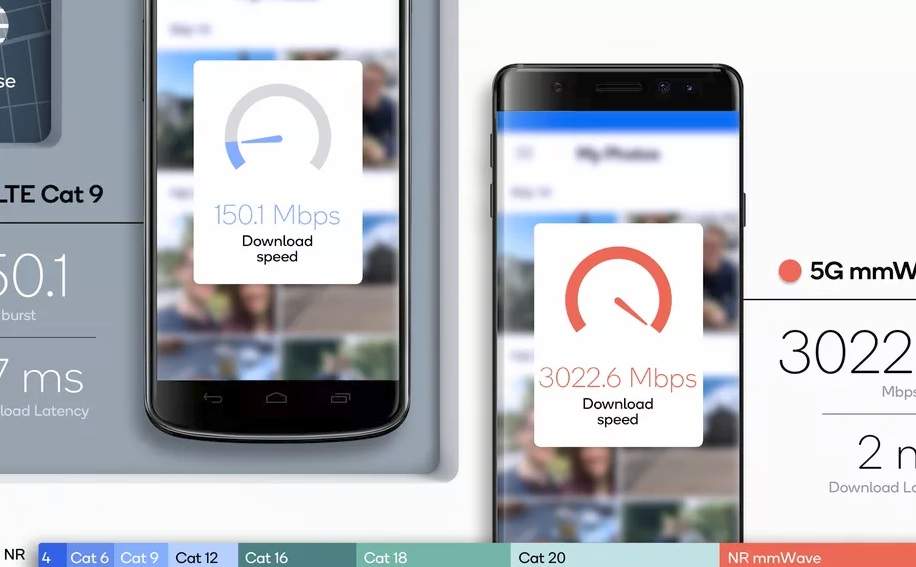
4G on the left in blue, 5G on the right in red. Source: theverge.com
Currently most 4G users experience real world speeds in the range of around 30-100 Mbps. 5G is predicting to increase that to 1,000 Mbps and then well beyond. It’s hoped that when the technology matures users will see real world speeds of 5-30 Gbps!
When you’re talking about speeds like that, it opens up the phone to new types of applications that just aren’t imaginable right now. As such, depending on what these new applications are it could greatly effect the phones hardware.
There’s also a big hope that with these insane increases in download speeds that phone companies will finally open up and allow more generous data allowances. This is obviously in the hands of phone companies but 5G has some special technical details that also help make this possible too due to large increases in the bandwidth per cell tower.
Either way, expect your 2025 phone to be significantly faster than what your current one is now. If the roll out goes well it could in all likelihood surpass your homes Internet speed.
Solid State Batteries
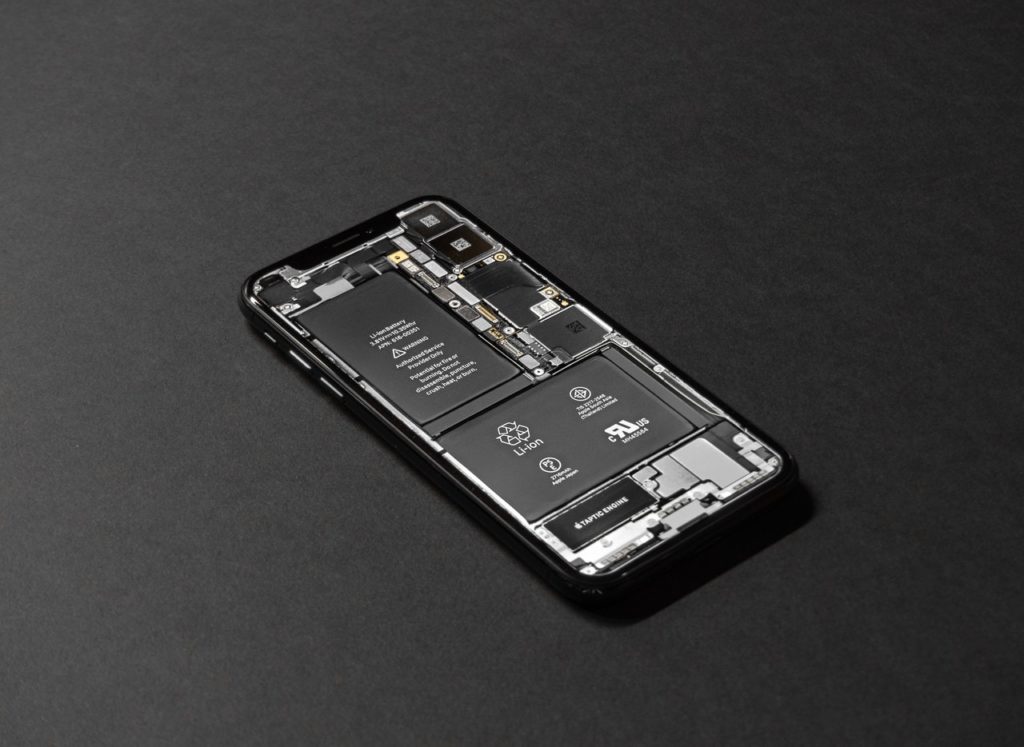
The battery is something everyone agrees is drastically holding phones – and many other technologies – back. Development of batteries has gone quite well in general terms, increasing density by ~5% or so ever year or two. However when you compare this to CPU, RAM, Network Speeds and other component development it essentially looks like it’s just standing still.
Batteries have come a long way though as can be seen by comparing some older phones to what we have today. The original Samsung Galaxy S from 2010 had a 1,500 mAH battery in it. Now, 8 years later the Galaxy S9 has a 3,000 mAH battery. The dimensions of the S9 are a little bigger (2.5 cm taller and 0.5 cm wider) but that’s still a straight doubling of battery capacity all while the entire phone got thinner!
As such I feel quite confident in estimating that by 2025 we should have phone batteries that are approaching about 5,000+ mAH (this is the non “plus” variants). With the oncoming barrage of all electric cars, busses, trucks and even motorbikes and boats battery technology is being invested in at a rate never seen before. As a result that incremental increase shouldn’t be too much of a problem to get us there in 6+ years time.
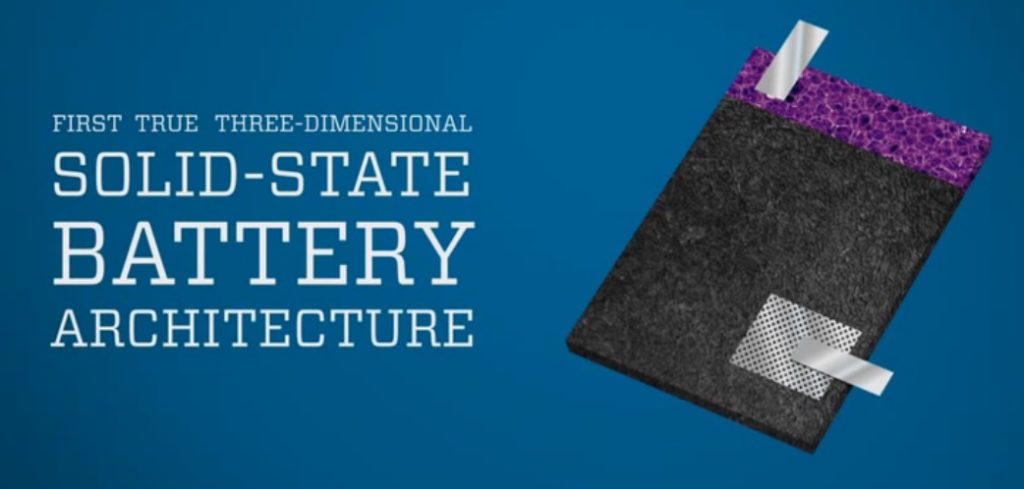
A Prieto Solid State Battery
There’s also the potential of a wild card being thrown in which is the famed solid state batteries. Mainly in the electric car market there are already whispers that Tesla is sitting on some substantial energy density increases. Obviously no one knows what the new technology is but when people do the math on the battery systems for their soon to be released Tesla Semi and Tesla Roadster it just doesn’t add up if you use today’s technology.
Other car manufacturers are also stating that they plan on using the new solid state battery technology and you can bet if there’s any new – even semi expensive – battery tech out there, major phone companies will be all over it!
If phones in 2025 do sport solid state batteries the capacity of them could potentially double. Furthermore thanks to the unique properties of solid state batteries they would charge far faster than today’s batteries, potentially in a few minutes.
If solid state batteries do pan out, we could be seeing 10,000 mAH smart phones that take <5 minutes to fully charge and then last 2-3 full days of use.
8K Video
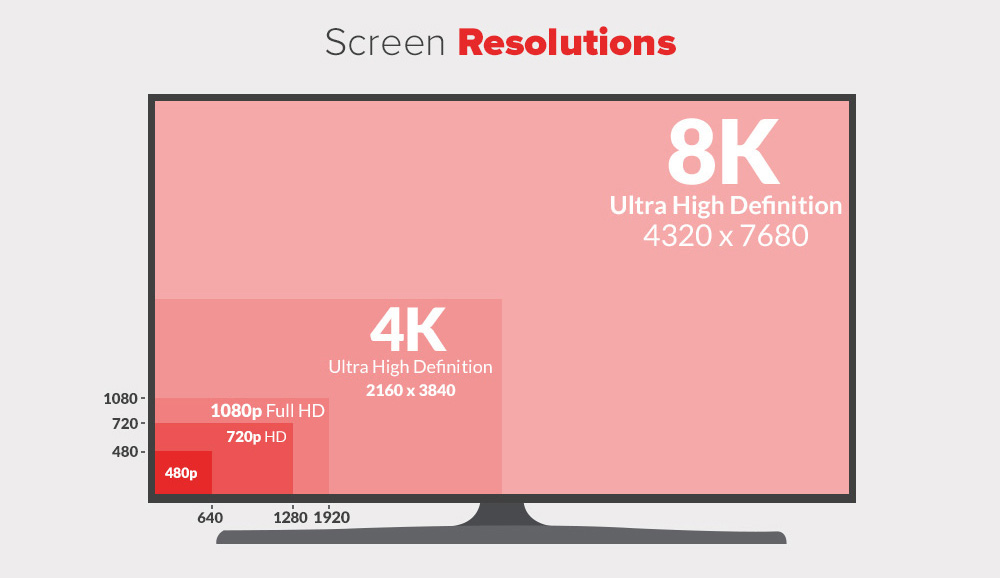
Source: businessbox.hu
1080p or “Full HD” is well and truly mainstream these days. The new entrant is 4K with content created in 4K or 2160 x 3840 still a bit rare but getting more popular every day. But smartphones have been recording video in 4K for 5 years now and this year the big names have released phones that can record super slow motion at rates of up to 960fps at 720p.
With the Galaxy S9 now being able to record 4K at 60fps it shouldn’t be too long before we start to see 5K video recording. So it’s not hard to imagine that in another 6+ years we’ll quite likely have smartphones capable of recording in 8K or 4320 x 7680. Currently you only get this high a resolution in hugely expensive cameras like the Red EPIC.
While you might think recording video in such a huge resolution is pointless there’s actually a number of benefits to recording in 8K and then producing a video that’s at 4K. For one you can get a better, clearer image produced by doing this down sampling than you otherwise would from just recording in straight 4K.
There’s also a whole host of advanced tricks you can do such as having the camera completely stationary and filming in 8K, then using software to crop into 4K and simulate a panning effect. The video above does exactly this by recording in 4K and then cropping down to a 1080p frame and panning left to right.
You can also simulate zooming all with perfectly silky smooth results. It’s also super handy to do in software stabilisation as you can cut off the edges of the video to stabilise the scene whilst still producing a 4K image. Or you can just record your video at an insanely high quality level. Pixels FTW!
Other Tech Advances
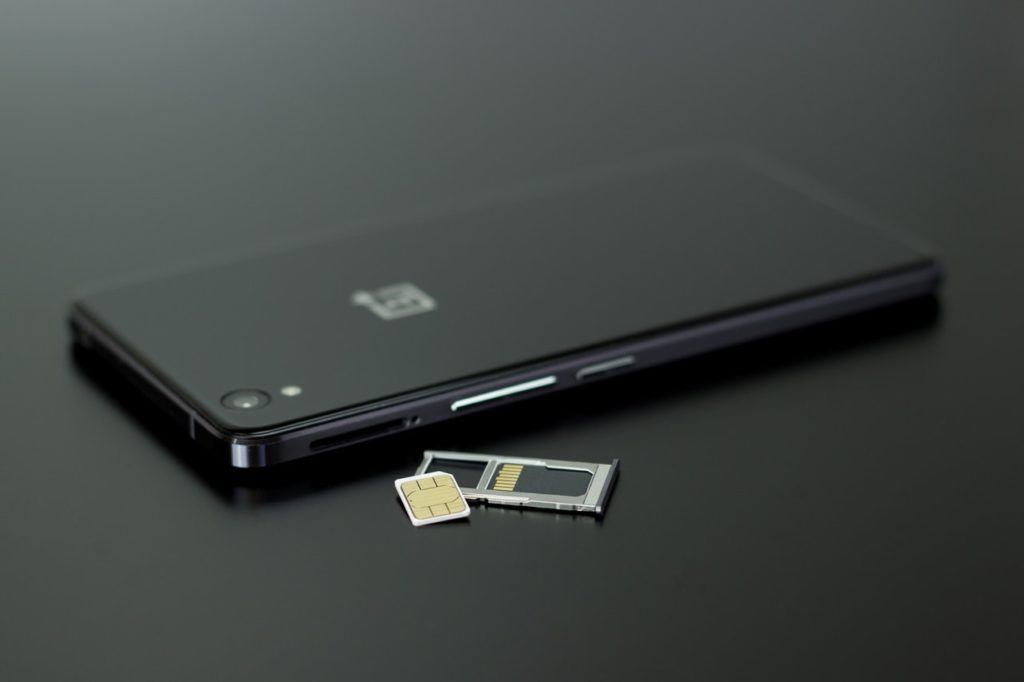
With the main phone spec estimates out of the way let’s dig more into other little bits, the first of which is the eSIM. This is just an electronic version of the SIM card you currently have. It’s built directly into the device and can be assigned to any carrier at the press of a button. You can learn more about eSIM’s here.
It’s predicted that by 2021 there will be over 500 million mobile and IoT devices shipping with an inbuilt eSIM. Yearly. So by 2025 it’s quite likely your new phone will not only have an eSIM, but so will your car, your laptop, your watch and everything else.
One of the biggest benefits to the eSIM is that you can seamlessly share data plans. So rather than paying $40 for your phone, $10 for your tablet, $10 for your watch and so on, you can just buy one data plan and have all your devices linked to that account, all sharing the same data.
You’ll also be able to avoid international roaming bills easier, get lighter, smaller devices that are better sealed plus just never have to deal with the stupid small plastic things again.
Getting even further into the potential other technology advancements we have the possibilities that by 2025 screens with 120 Hz refresh rates are common, AR or VR apps are all the rage and even that GPS is much more accurate and consumes half the power it does today. These are all quite likely to occur, but are much more “up in the air” than the other mentioned technologies.
So what would you like to see in a phone from 2025? A roll out display? Terabytes of storage space? Or maybe something completely different. Let us know in the comments below!
The benefits include: 1) How to get those silky smooth videos that everyone loves to watch, even if you're new 2) How to fly your drone, from taking off to the most advanced flight modes 3) Clear outlines of how to fly with step-by-step instructional demonstrations and more 4) Why flying indoors often results in new pilots crashing their drone 5) What other great 3rd party apps are out there to get the most out of your drone 6) A huge mistake many pilots make when storing their drone in the car and how to avoid it 7) How to do all of these things whilst flying safely and within your countries laws.




